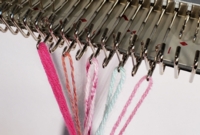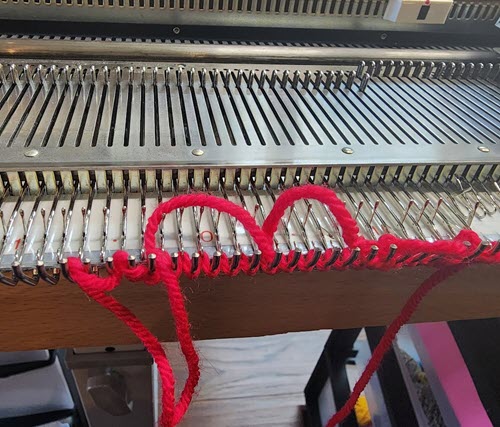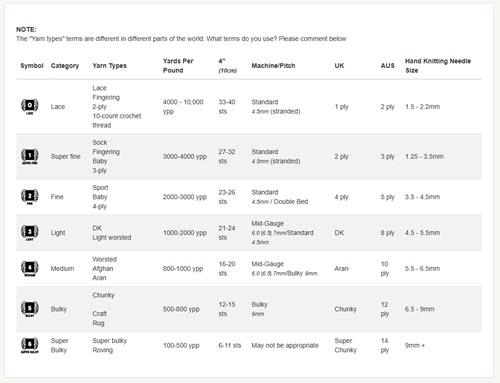What weight of yarn should I use?
- September 30, 2025
- 0 comments

A knitter recently reached out, frustrated because she could not get her stitches cast on. When I asked what yarn she was using, her reply was: "4-ply yarn". Her photo told the story. The yarn was far too heavy for her standard gauge machine.
"My manual says to use 4-ply yarn"
It was also clear she did not understand what 4-ply meant. The term is confusing. In some parts of the world, ply refers to the number of strands. In others, it is shorthand for a yarn weight category. That means a 4-ply yarn might be fingering weight in the UK while a US knitter could assume it means worsted weight. No wonder she ran into trouble.

Unlike hand knitting where you can often make a yarn work by changing needle size, machine knitting is picky. Every machine is designed for a specific range of yarn sizes. When you push outside that range, you invite stubborn cast-ons, dropped stitches, and fabric that feels stiff and unwearable.
Each machine has a comfort zone for yarn. Use this as a quick orientation to understand YOUR machine
If your yarn does not match your machine, it is not your skill. It is a mismatch.

Use the chart below to match yarn to machine. Add your common examples and notes so this becomes a go-to reference for you and your readers.
Reminder about ply: 4-ply in the UK usually refers to a light fingering to fingering category. In the US, ply is often used to describe strand count and does not guarantee thickness. When in doubt, check wraps per inch or the yarn label gauge.
Do not give up on a beautiful yarn. Try one of these approaches.
If casting on feels impossible, pause and check the yarn. Matching yarn weight to machine gauge turns frustration into smooth and satisfying knitting.
| Symbol | Category | Yarn Types | Yards Per Pound | 4" (10cm) | Machine/Pitch | UK | AUS | Hand Knitting Needle Size |
|---|---|---|---|---|---|---|---|---|
| Lace | Lace Fingering 2-ply 10-count crochet thread |
4000 - 10,000 ypp | 33-40 sts | Standard 4.5mm (stranded) |
1 ply | 2 ply | 1.5 - 2.2mm | |
| Super fine | Sock Fingering Baby 3-ply |
3000-4000 ypp | 27-32 sts | Standard 4.5mm (stranded) |
2 ply | 3 ply | 1.25 - 3.5mm | |
| Fine | Sport Baby 4-ply |
2000-3000 ypp | 23-26 sts | Standard 4.5mm / Double Bed |
4 ply | 5 ply | 3.5 - 4.5mm | |
| Light | DK Light worsted |
1000-2000 ypp | 21-24 sts | Mid-Gauge 6.0 |6.5| 7mm/Standard 4.5mm |
DK | 8 ply | 4.5 - 5.5mm | |
| Medium | Worsted Afghan Aran |
800-1000 ypp | 16-20 sts | Mid-Gauge 6.0 |6.5| 7mm/Bulky 9mm |
Aran | 10 ply | 5.5 - 6.5mm | |
| Bulky | Chunky Craft Rug |
500-800 ypp | 12-15 sts | Bulky 9mm |
Chunky | 12 ply | 6.5 - 9mm | |
| Super Bulky | Super bulky Roving |
100-500 ypp | 6-11 sts | May not be appropriate | Super Chunky | 14 ply | 9mm + |
Tell me your story in the comments. Let’s swap lessons learned and solutions!
© Copyright 2026 Knititnow.com, All rights reserved.